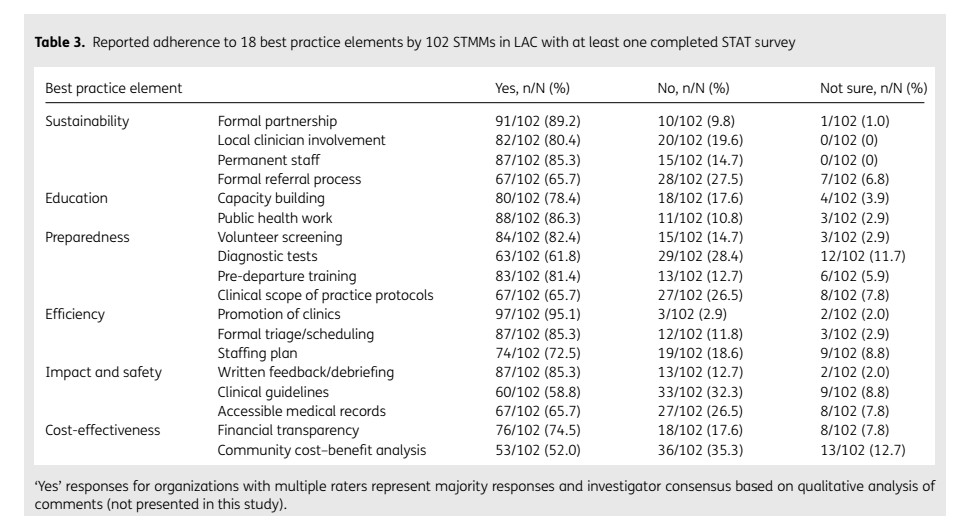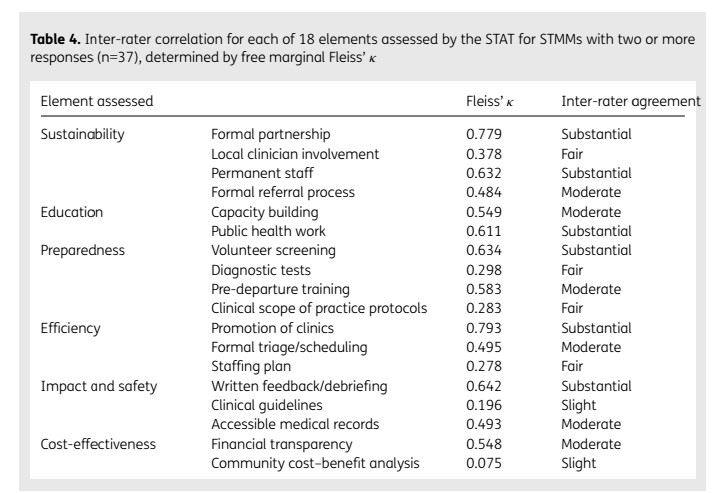Evaluating the reliability of the STAT tool for medical missions
June 21, 2020 |
The COVID-19 pandemic has put most global health projects on a temporary pause. Nonetheless, our latest pre-pandemic publication looked at the performance of the Service Trip Audit Tool (STAT tool), a brief eighteen-point survey intended for completion by medical mission administrators and past volunteers. The tool aims to help future volunteers and overseas healthcare workers distinguish between good and bad medical mission programs. We discussed our development of that tool through discussion with North American medical mission stakeholders in a previous publication. That publication is summarized here.
How we assessed the reliability of the STAT tool for quality assessment of medical missions
We invited program administrators and past volunteers from 335 medical mission organizations to anonymously complete the STAT tool for their medical mission. Over thirty percent of the solicited organizations responded to the survey. Of the responders, most organizations claimed to include a majority of the recommended STAT practices in their medical projects.
However, only about two-thirds of organizations claimed to have accessible medical records, clinical scope fo practice protocols, clinical guidelines, and minimum diagnostic tests. You can see how the responding medical missions performed in the data table below:

For organizations where multiple raters completed the survey, their agreement was moderate to substantial for twelve of the eighteen questions. You can see how each question performed in the data table below:

How is this study different from other best practice suggestions for medical missions?
To avoid harms to vulnerable communities abroad, volunteers need to select medical missions in a data-driven way, rather than simply based on gut feelings. The simplicity of the STAT tool allows volunteers to rapidly audit programs. It also minimizes the bias of these assessments by using binary criteria.
Read the published peer-reviewed article here in International Health.
Register
Sign up for free to flag trips of interest and email organizations directly through our directory.
Comments
0 comments